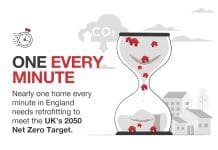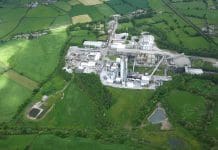Akanksha Khatri, head of nature and biodiversity at the World Economic Forum, looks at new guidance that sets out five priority actions for the cement and concrete industry to transform their business practices and contribute to a “nature-positive” economy
Demand for infrastructure is set to rise, driven by population growth and continued movement of people to urban areas. The global urbanisation rate is projected to reach 68% by 2050, with two out of three people set to live in cities or other urban centres.
To meet this demand, global construction work is expected to increase in value by $4.2tn over the next 15 years.
China’s construction sector is anticipated to rebound starting in 2025, while the US faces a $150bn housing deficit. India is set to emerge as the world’s fastest-growing construction giant, and the UK’s ambitious growth plans currently lead the charge in Western Europe.
The need for nature-positive construction is more pressing than ever
All this building means demand for cement and concrete, key to construction, is set to grow. This, in turn, could exacerbate the extent to which the cement and concrete sector contributes to drivers of nature loss, such as freshwater and other resource use, land use change and ecosystem disturbance due to quarrying activities and greenhouse gas emissions.
Cement and concrete operations have a high dependency on natural resources. For example, water is a key ingredient in concrete production, which is responsible for 9% of global industrial water withdrawal. Water demand is set to increase rapidly, and 75% of the water demand for concrete production is expected to occur in regions facing water stress by 2050.
Companies that can get ahead of the risks of nature loss can be prepared for incoming policy and regulatory requirements and minimise disruption from nature-related physical, transition and systemic risks.
By taking early action, businesses can build resilience and benefit from the opportunities of transitioning towards a “nature-positive” world by 2030 – the mission at the heart of the UN Biodiversity Plan to halt and reverse nature loss.
Taking practical action to mainstream biodiversity in business
Companies need to start by: acknowledging the value of nature to their business; assessing and measuring the aforementioned impacts and dependencies on nature; setting transparent, time-bound, science-based targets; taking actions to transform their operations and value chains; and publicly disclosing performance and other data relating to nature.
The World Economic Forum, in collaboration with Oliver Wyman, has produced new guidance, Nature Positive: Role of the Cement & Concrete Sector, which sets out in detail the five priority actions that corporate leaders should take to transform and innovate their business practices and contribute to a nature-positive economy:
- Improve water stewardship across the value chain.
- Adopt technologies and manufacturing practices to reduce greenhouse gas (GHG) and airborne emissions.
- Continue and strengthen reclamation and rehabilitation approaches as well as biodiversity management of quarries and improve land stewardship on all occupied land.
- Expand circularity efforts across the value chain.
- Innovate to offer products that support the transition to nature positive.
The guidance reveals that undertaking these priority actions could unlock $44bn in annual business opportunities by 2030 across the sector’s value chain.
Embracing collaboration for more progress
In some jurisdictions, cement and concrete companies already operate under stringent regulatory frameworks and some companies have made voluntary nature commitments.
Holcim, for example, launched its new nature strategy that commits the company to contribute to a nature-positive future, with measurable water and biodiversity targets.
It committed to a 33% reduction in freshwater withdrawal per tonne of cement produced and that 75% of its sites located in water-risk areas will be water positive by 2030.
Heidelberg Materials has committed to 15% space for nature in all active quarries to align with nature positive.
Meanwhile, Cemex has set the goal of increasing the amount of waste and by-products captured for use as alternative fuels and raw materials by 50% by 2030, with 95% of waste being reused, recycled or recovered.
These efforts are also supported by industry associations like the Global Cement & Concrete Association (GCCA), which represents 80% of the global cement industry by volume outside of China and has developed a specific biodiversity and water policy.
A nature positive industry is integral to achieving net zero
The ocean and land have absorbed more than half of the world’s carbon emissions – there can be no net zero without nature. And while climate change and biodiversity are interlinked, only 5% of Fortune Global 500 companies have targets on nature, with less than 1% understanding their dependencies. Companies need to complement their net zero plans by setting credible and comprehensive nature strategies.
To help businesses achieve this, Business for Nature’s new Nature Strategy Handbook offers businesses a step-by-step guide to develop and publish a nature strategy as part of its Now for Nature global campaign.
Businesses, policymakers, financial institutions, civil society and philanthropists now need to work together to reshape the cement and concrete sector, accelerate action and show progress towards implementing the UN Biodiversity Plan to halt and reserve nature loss.














